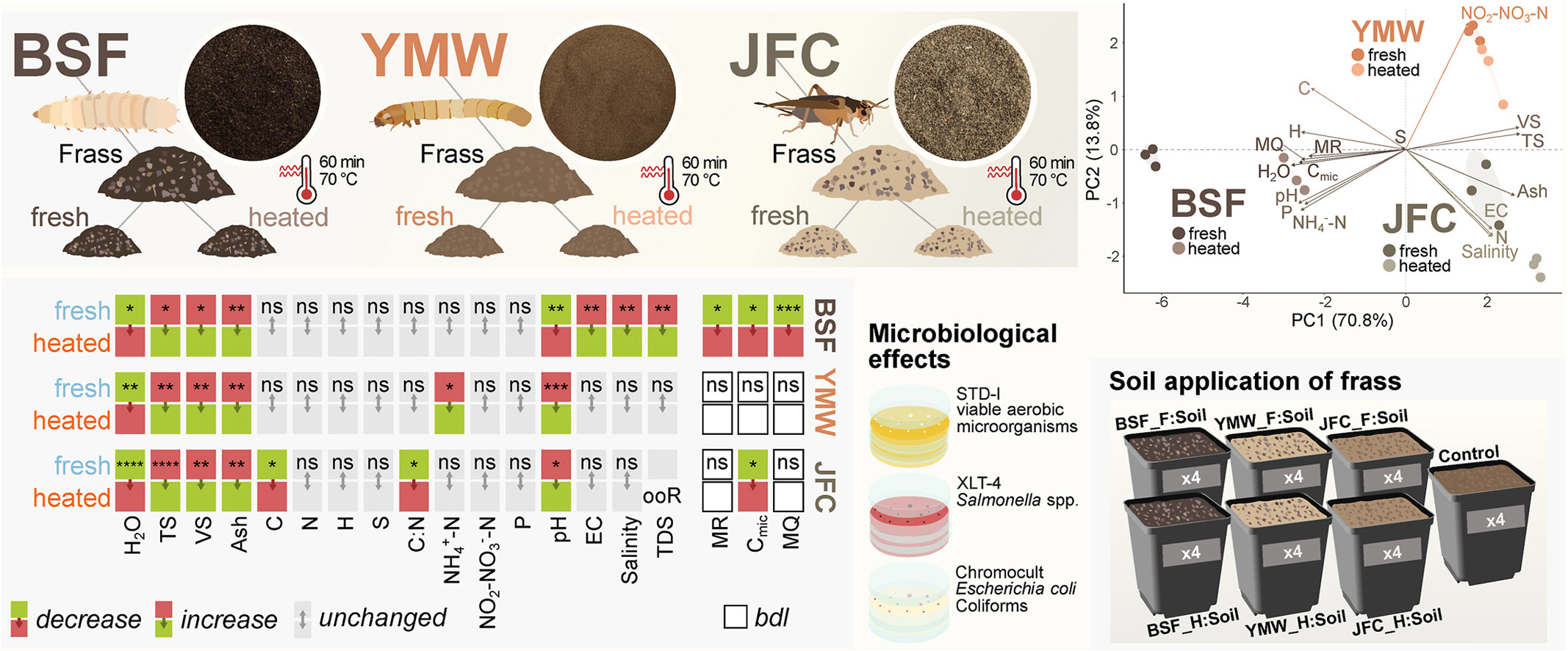New publication: Praeg and Klammsteiner (2024) J Environ Manage 356, 120622
Our latest study delves deep into the world of insect frass, shedding light on its potential as a nutrient-rich organic fertilizer. By analyzing frass from black soldier fly, yellow mealworm, and Jamaican field cricket, we’ve discovered interesting variations in properties and nutrient concentrations, highlighting its effectiveness in enriching soil health and promoting plant growth. In addition, our research explores the impact of heat treatment on frass properties and microbiota, ensuring clean production practices. These findings not only revolutionize our understanding of insect frass but also pave the way for regulatory standards and its widespread adoption in agriculture.
Link to full study: doi.org/10.1016/j.jenvman.2024.120622
